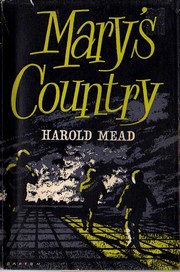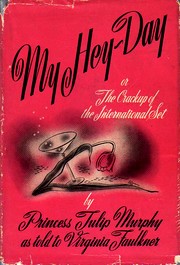
Excerpt
On top there were some flannel slacks and a pair of tailored Bermuda shorts. A half-dozen handkerchiefs, monogrammed “BD.” A pair of tan loafers, some sports shirts in conservative solid colors. Sunglasses, underwear, an electric razor with its cord, socks inArgyll plaids. Strapped into the top of the lid was a carefully folded sports jacket, a soft tweed in a dark bluish gray. Everything was expensive, conservative, and carefully packed. These things were mine now, I thought, or rather I belonged to tem. I wondered whether something would change in me when I put them on and I would feel different, or whether it would be the other way around, my essence that would sink into the clothes, gradually wearing away their strangeness and making them familiar. For that, of course, you would have to have an essence. On the whole I would have preferred to stay as I was in the anonymous hospital pajamas. But the clothes were mine now for better or worse; I had passed the point where I could choose or reject.
I lowered the lid carefully and latched it. On the long and precarious journey back to the bed I caught a glimpse of myself in the mirror. It was the face of a stranger, a patchwork in various shades of red, expressionless except for the left side of the mouth still pulled a little upward by the shrunken muscle. The leanness was skull-like; growing out of the scalp there were meager tufts of brown hair. You’re an ugly brute whoever you are, I told the face in the glass. But I knew who he was; he was the owner of the clothes in the suitcase. For a few seconds that afternoon I had balanced on the razor edge, and then I had chosen and now the clothes were mine, or rather they were myself, a new human being I would have to study and master. For an instant I felt the vertigo of empty space: where was I going? I realized I was still sick and I got back in bed.
Editor’s Comments
Mortal Leap tells a story it seems as if we’ve seen on TV a dozen times: a man takes on another’s identity, abandoning his own, and lives out a new life. But have we?
There are plenty of stories of mistaken identity, and plenty more, like the Kevin Kline comedy, “Dave”, where one person pretends to be another (in that case, the President of the United States) to deceive others. In Mortal Leap, however, we are led, with careful attention to detail, motivation, and effect, through a man’s decision to utterly abandon the life he’s lived, the person he’s become in twenty-some years since birth, and become another man. Another man with a history, possessions, relationships, traits, habits. Another man with a wife, a family, a life already being lived. Have we ever really heard this story before?
In this book, his second novel, MacDonald Harris takes us, as if in freeze-frame, through a salto mortale–literally, a mortal leap–the circus acrobat’s mid-air vault from one trapeze to another. We follow the nameless protagonist as he swings back and forth through a life as a merchant seaman in the 1930s and early 1940s. Running away from a strict Mormon family, he makes his way to Oakland, where he gets a berth on a tramp freighter. He’s befriended by a veteran hand, a former Russian anarchist, who teaches him how to survive–but also uses him to escape from arrest for smuggling drugs. The man spends time in San Quentin prison, then returns to the sea. He learns enough to gain a third-class officer’s cap, but other than that, his life is an endless routine of watches, ports, whores, and booze. He realizes that his shipmates care a little for him and he for them: that when his time comes, they will watch him die “without sympathy, without curiosity, simply indifferent.”
Then, his freighter is sent to take a load of fuel and supplies to a nameless southwest Pacific island–probably Guadalcanal. Ambushed along with its escort by a group of Japanese ships, the ship is hit and sunk. The man survives and makes it to an unhabited atoll. There he encounters and kills a downed Japanese pilot. He takes the pilot’s life raft and attempts to cross the channel one night to rejoin the Americans. His crossing, however, takes him into the direct path of a skirmish between the U.S. and Japanese navies. The raft is lost and the man is caught in the swirl of debris and burning oil around a sinking U.S. frigate. His face and hands are severely burned, but a sailor rescues him just before he drowns.
In Harris’ narrative, this is the moment when the acrobat lets go of the first bar:
What happened was simple, even banal: I became naked, died, lost parts of my flesh and most of my ego along with a few illusions such as a belief in the uniqueness of my personal scrap of consciousness and the cosmic importance thereof, and went on from there. All that was left was something inside that I don’t know what to call–a soul?
He is evacuated to a Navy hospital in Hawaii. “There,” Harris writes,
I lay for three months in a hospital bed, an inert network of pains, discomfort, smells. Inside was nobody. There was only a nexus of existence, buried very deep and only gradually working to the surface. Out of habit the body went on breathing, eating, excreting, being awake and connected to its eyes and ears. Inside lay the awareness, and was magnificently uninterested in everything that went on outside.
When the doctors and hospital staff attempt to determine his identity, he tells them nothing. He has let go and is in free fall. The only thing he knows for certain is that he cannot go back.
From the circumstances of his rescue, his apparent age and physical features, Navy investigators finally speculate that the man is Lieutenant Ben Davenant, an officer on the U.S.S. Marcus, one of the ships lost in the night battle. They send a photo of the man’s scarred face to Davenant’s parents, who do not recognize him. Davenant’s wife, however, comes to Hawaii to see for herself.
The man still has no intention of doing anything, of merely plunging forward into oblivion. But then the wife comes into the hospital room and another trapeze appears before him:
A moment later she was bending over the bed and I felt the light touch of her lips on my forehead; I caught an elusive scent of linen and perfume. Even then I was not fully awake. And yet in those few seconds when everything hung on a knife edge I committed myself by my silence. I felt words forming in my mouth, but I couldn’t arrange them properly; the time passed when I might have spoken and still I said nothing.
One could say that the salto mortale analogy–which Harris himself introduces later in the book–misses the point somewhat. The man doesn’t grab for the other bar. He merely says nothing–he allows the woman to say that he is Davenant. And at first, though he goes along with the deceit, he’s in many ways just as passive as he was in free fall. Ary, the wife, takes charge. She gets them back to the U.S., arranges for man/Davenant’s discharge, and settles them in her father’s large seaside house in Laguna Beach.
Becoming another person, as Harris shows us, is much harder than it ever seems in the movies. There are so many little practical hurdles. The man, after all, was a rough merchant sailor before, and now he is in the midst of a wealthy, cultured family. He has to learn not to dig wax out of his ear with his pinky, not to ask for ketchup when eating a steak, how to mix a cocktail.
When I began to grasp the complexity of what I had to do I felt like a trained baboon trying to play a cello. At every turn it seemed there was a new decision, probably crucial, although I could never be sure. What did I want for dinner? Which necktie should I put on? Did you wear a necktie at all to go to the Coast Inn at eight o’clock for drinks? Before a rack of neckties I was in a cold sweat.
I first read Mortal Leap almost thirty years ago, and I remember how the narrative seized my attention. It was one of those books you begrudge the rest of your life for taking you away from. When you don’t know how it’s going to turn out, you feel as if you are hurtling forward along with the protagonist.
When I reread the book recently, it seemed even more powerful and affecting. I knew how it would turn out, but now the suspense was in seeing how Harris could make it plausible. What I saw this time around was how he manages to make this wildly improbable situation into a very basic lesson about being. So the man learns how to imitate Ben Davenant without getting caught–or at least, so he thinks. The man has made the leap and a new bar is in his hands. But he still has to confront the question, “Now what?”
It wasn’t a matter of convincing these people or anybody else that I was something I was not, or even of trying to make myself into something they wanted me to be. It was a matter of making myself into something I would decide; of asking myself what was the best I had and what I could make with it and then working as hard as I could to make it.
“In order for it to be a life you had to make something, even if it wasn’t something very important,” the man concludes. What was wrong with the life he’d led before being caught in the battle and burned “had not been dishonesty or embezzlement or cowardice or even murder,” he concludes. “My real sin had been apathy, the kind of cockeyed contempt for everything I had learned from the others on all the bad ships I had sailed on in all those pointless wandering years.”
Ironically, MacDonald Harris was, himself, an invention. His real name was Donald Heiney, a merchant sailor and naval officer who’d gone to college on the G.I. Bill after World War Two and become a professor of literature. MacDonald Harris was his pen name, which he used first for short stories he wrote for magazines and then, beginning in the early 1960s, for a total sixteen novels, a non-fiction book, and one short story collection published before his death in 1993. His work often received strong critical praise, and C.P. Snow once said of him, “Harris is a real writer, and I don’t use that phrase except of someone who ought to be cherished and encouraged.”
Since his death, his son, Paul Heiney, has maintained a set of web pages (http://www.physics.upenn.edu/~heiney/harris) about Harris/Heiney’s life and work. Although his most popular book, The Balloonist, was nominated for the National Book Award, none of his works are now in print. Mortal Leap was barely even noticed by critics when first published and never even rated a paperback reissue. Among the few items you’ll find about MacDonald Harris now is an admiring tribute by the highly-successful author, Philip Pullman. Pullman writes of Harris’s work that,
… there is a consistency despite the huge variety in setting and subject matter, and that lies in the intelligence, the quietness, the subtle astringency of manner; in a sensibility and temperament that is experienced rather than innocent, ironic rather than emotional, sceptical rather than credulous; if I wanted to be mischievous, I might say European rather than American. And there is a constant preoccupation with the mystery of identity.
And in none of his books does Harris confront this mystery better than in Mortal Leap. You can find at least thirty copies of this novel for sale on the Internet, most of them under $10. Get one and see if you don’t find yourself asking a question or two about your own identity.
Locate a Copy
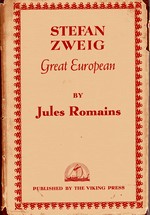 Stefan Zweig: Great European reprints a lecture given by Jules Romains, poet, dramatist, and author of the lengthy series of novels, Men of Good Will, a few months before the start of World War Two. For the book, Romains added a preface, written in exile in New York in 1941. This book’s timing, therefore, is exceptionally poignant. As Romains delivers his original lecture, Europe is still at peace–if barely. A few threads of hope remain intact in the cultural fabric of Europe as he, Zweig, and others had come to know and define it: “I was going to say: ‘All that is over and done with,'” Romains writes of this cosmopolitan era, “but it would be an exaggeration. Rather: ‘All that is completely changed–greatly endangered.'”
Stefan Zweig: Great European reprints a lecture given by Jules Romains, poet, dramatist, and author of the lengthy series of novels, Men of Good Will, a few months before the start of World War Two. For the book, Romains added a preface, written in exile in New York in 1941. This book’s timing, therefore, is exceptionally poignant. As Romains delivers his original lecture, Europe is still at peace–if barely. A few threads of hope remain intact in the cultural fabric of Europe as he, Zweig, and others had come to know and define it: “I was going to say: ‘All that is over and done with,'” Romains writes of this cosmopolitan era, “but it would be an exaggeration. Rather: ‘All that is completely changed–greatly endangered.'”





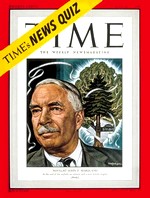
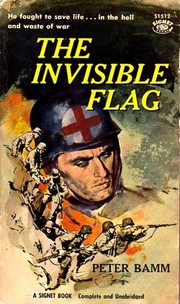
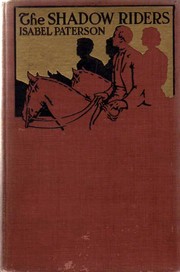
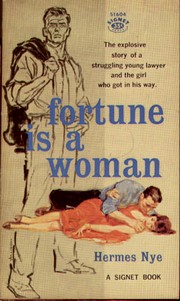
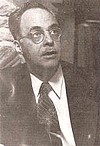 Hermes Nye was born in Chicago, but became a legendary East Texas character: a lawyer, folksinger, folklorist, novelist, humorist, and local liberal activist. Nye clearly never took anything, including himself, too seriously. When, in the midst of the 1960s folk boom, he published a guide to folk songs, he gave it a triply-redundant title that included its own punchline:
Hermes Nye was born in Chicago, but became a legendary East Texas character: a lawyer, folksinger, folklorist, novelist, humorist, and local liberal activist. Nye clearly never took anything, including himself, too seriously. When, in the midst of the 1960s folk boom, he published a guide to folk songs, he gave it a triply-redundant title that included its own punchline: 